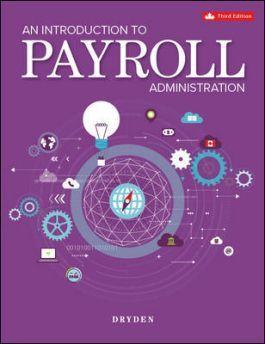Introduction to Banking
Barbara Casu
Bayes Business School, City, University of London
Claudia Girardone
Essex Business School, University of Essex
Philip Molyneux
Bangor Business School, Bangor University
KAO Two
KAO Park
Harlow CM17 9SR
United Kingdom
Tel: +44 (0)1279 623623
Web: www.pearson.com/uk
First published 2006 (print and electronic)
Second edition published 2015 (print and electronic)
Third edition published 2022 (print and electronic)
© Pearson Education Limited 2006, 2015, 2022 (print and electronic)
The rights of Barbara Casu, Claudia Girardone and Philip Molyneux to be identified as authors of this work have been asserted by them in accordance with the Copyright, Designs and Patents Act 1988.
The print publication is protected by copyright. Prior to any prohibited reproduction, storage in a retrieval system, distribution or transmission in any form or by any means, electronic, mechanical, recording or otherwise, permission should be obtained from the publisher or, where applicable, a licence permitting restricted copying in the United Kingdom should be obtained from the Copyright Licensing Agency Ltd, Barnard’s Inn, 86 Fetter Lane, London EC4A 1EN.
The ePublication is protected by copyright and must not be copied, reproduced, transferred, distributed, leased, licensed or publicly performed or used in any way except as specifically permitted in writing by the publishers, as allowed under the terms and conditions under which it was purchased, or as strictly permitted by applicable copyright law. Any unauthorised distribution or use of this text may be a direct infringement of the authors’ and the publisher’s rights and those responsible may be liable in law accordingly.
All trademarks used herein are the property of their respective owners. The use of any trademark in this text does not vest in the author or publisher any trademark ownership rights in such trademarks, nor does the use of such trademarks imply any affiliation with or endorsement of this book by such owners.
Pearson Education is not responsible for the content of third-party internet sites.
The Financial Times. With a worldwide network of highly respected journalists, The Financial Times provides global business news, insightful opinion and expert analysis of business, finance and politics. With over 500 journalists reporting from 50 countries worldwide, our in-depth coverage of international news is objectively reported and analysed from an independent, global perspective. To find out more, visit www.ft.com/pearsonoffer
ISBN: 978-1-292-24033-6 (print)
978-1-292-24035-0 (PDF) 978-1-292-24037-4 (ePub)
British Library Cataloguing-in-Publication Data
A catalogue record for the print edition is available from the British Library
Library of Congress Cataloging-in-Publication Data
Names: Casu, Barbara, author. | Girardone, Claudia, author. | Molyneux, Philip, author.
Title: Introduction to banking / Barbara Casu, Claudia Girardone, Philip Molyneux.
Description: Third edition. | Harlow, England ; New York : Pearson, 2022. | Includes bibliographical references and index. | Summary: “The aim of this textbook is to provide a comprehensive introduction to theoretical and applied issues relating to the global banking industry. Despite the fears of Henry Ford, we do not think reading this book will cause a revolution but we do hope it will at least provide you with an enjoyable and interesting insight into the business of banking”-- Provided by publisher.
Identifiers: LCCN 2021034509 (print) | LCCN 2021034510 (ebook) | ISBN 9781292240336 (paperback) | ISBN 9781292240374 (epub)
Subjects: LCSH: Banks and banking--Europe. | Banks and banking. | Bank management--Europe. | Bank management.
Classification: LCC HG2974 .C375 2022 (print) | LCC HG2974 (ebook) | DDC 332.1--dc23
LC record available at https://lccn.loc.gov/2021034509
LC ebook record available at https://lccn.loc.gov/2021034510
10 9 8 7 6 5 4 3 2 1
26 25 24 23 22
Cover image: Andrey Suslov/iStock/Getty Images Plus/Getty Images
Cover designed by Two Associates
Print edition typeset in 9.5/12.5pt Charter ITC Std by Straive
Printed and bound in Slovakia by Neografia
To my late father, Antonio. To Martin, Lila, Milan, Monika and to Beth. And to my mum and sister (BC)
To Marc, Matteo and Leonardo. To my parents Nieves and Sandro (CG)
To Delyth, Alun, Catrin, Gareth, Gethin, Lois and Rhiannnon (PM)
4
Part 2 Central banking and bank regulation
7.8
7.9
Part 3 Issues in bank management
17 Banking in emerging markets
Part 5 Advanced topics in banking
3.4
6.3
7.3
7.4
7.5
7.6
9.1
11.2
11.3 The foreign asset and liability position of a Spanish bank: a net long asset position in
11.5 Theoretical examples on the ESG cycle – impact of environmental and social factors on an institution’s risk profile: (a) impact through physical risk; (b) impact through transition risk; and (c) impact of social factors
11.6 Incorporation of ESG risks at the point of loan origination
11.7
12.4
12.5
12.6
12.7
12.8
12.9
13.1
15.3
15.4
15.5
15.6
16.5
List of tables
3.4
3.5
5.3
5.4
5.5
7.1
7.2
7.3
7.4
7.5
7.6
7.8
7.11
8.2
8.3
8.4
8.5
8.6
9.1
9.3
9.4
9.5
9.6
9.7
9.11
9.12
9.13
9.14
9.15
12.5
14.12
major banks’ (the ‘Majors’) performance at a glance,
14.13 Five-firm concentration ratio as percentage of total banking sector assets and Herfindahl index, 2008 to 2019 487
14.14 Selected balance sheet items (€bn and as % of total assets), 2013 490
14.15 Selected income statement items (EU banks), crisis period (2008–2013) 492
15.1 Sub-prime home purchase loans (%) pre-crisis period 499
15.2 Ten largest US banking companies, ranked by assets ($mil) 507
15.3 Leading US property and casualty insurance companies, March 2020 509
15.4 Leading US life insurance companies, 2019 509
15.5 US financial intermediaries (market share, total assets) 512
15.6 Number of non-cash payments ($bn), 2000–2019 514
15.7 Assets of US commercial banks, 1995–2019 ($bn) 516
15.8 Liabilities and equity capital of US commercial banks, 1995–2019 ($bn) 517
15.9 Bank profitability by state, 2019 520
15.10 US financial regulators 522
15.11 Supervisors and regulators of US banks 525
16.1 Japanese domestic banking groups 535
16.2 Licensed financial institutions in Japan (as of early 2021) 537
16.3 Payments processed by selected interbank funds transfer systems 546
16.4 Japan’s 1998 banking crisis – major events 549
16.5 Financial assets of Japan by sectors 2015 and 2016 (billion yen)
16.6 Regulation and supervision by bank type
16.7 Performance indicators of Japanese banking sector (2014–2016, Sept)
16.8 Balance sheet (September 2017, values in million yen) 558
16.9 Income statement (September 2017, values in million yen) 559
17.1 The World Bank’s ‘4 × 2 matrix of financial system characteristics’ 566
17.2 Financial institution characteristics by country, 2008–2010 average 568 17.3 Finance and growth: a review of the literature 571
17.4 Emerging economies – geographical region 574
17.5 Emerging economies – income classification 575
17.6 Nominal GDP growth (at constant prices) (%) – emerging and other economies 578
17.7 Banking in Asia 580
17.8 Number of banks by host country, aggregates by income level and regions 591
17.9 Foreign ownership limits in South East Asian banking 592
18.1 True sale vs. synthetic securitisation 615
19.1 Motives for bank M&As 631
19.2 Major US bank mergers & acquisitions since 2000 632
19.3 European banks M&As, 2007–2013 637
19.4 Bank acquisition of FinTech companies, 2010–2018 638
20.1 Bank size and concentration 658
20.2 Herfindahl index and 5-bank concentration ratio (by assets) 660
20.3 H-statistics: interpretation 665
20.4 Panzar–Rosse H-statistic 667
20.5 Interpretation of the CV parameter (λ) 668
20.6 Lerner index – Banks in Asia Pacific (average figures, 2003–2010) 669
20.7 Competition measures and ranks for selected EU countries (average values, 2000–2009) 672
20.8 Correlation matrix for the competition measures 672
20.9 Empirical evidence of the competition-stability relationship 677
List of boxes
3.2
3.3
5.1
5.2
5.3
5.4
8.1
8.3
10.3 The process of deconstruction of
10.4
10.5
10.6
10.7
11.1
11.2
11.3
11.4
11.5
11.6
11.7
11.8
11.9
12.1
13.4
13.5
13.8
13.9
14.1
14.2
14.3
14.4
14.5
14.6
15.2
16.1
16.2
17.1
17.2
19.4
Preface
It is well enough that people of the nation do not understand our banking and monetary system, for if they did, I believe there would be a revolution before tomorrow morning. Henry Ford
The aim of this textbook is to provide a comprehensive introduction to theoretical and applied issues relating to the global banking industry. Despite the fears of Henry Ford, we do not think reading this book will cause a revolution but we do hope it will at least provide you with an enjoyable and interesting insight into the business of banking.
A major motivation for writing this text has been to fill a gap in the market. For a number of years we have all taught banking courses and we have become aware of students’ frustration about the lack of a comprehensive yet accessible textbook that deals with a broad spectrum of introductory banking issues. Most introductory texts that cover banking issues tend to be broad-based, focusing on economics and finance, and these (in our view) do not provide sufficient detail or coverage of the theoretical and institutional detail that is essential for an accurate understanding of critical banking issues. While there are textbooks that provide such coverage targeted at advanced undergraduates and the postgraduate market, there is no text that has comprehensive coverage of such issues for those new to the study of banking. In addition, many textbooks that cover banking as part of broadly based money and banking courses tend to provide only limited attention to international experiences. As such, we have written this text to provide (we hope) an essential teaching and learning resource for anyone who has to lecture introductory undergraduates as well as professional banking courses.
The first edition of this book (2006) described a world where the banking industry experienced marked changes and deregulation allowed banking firms to diversify into broader financial services areas. Commercial banks became full-service financial firms, offering a range of non-traditional financial services including insurance, securities business, pensions and the like. Many banks dropped the word ‘Bank’ from their titles to emphasise their much broader role in the provision of financial services to households and corporations. In addition, various trends such as industry consolidation, securitisation and disintermediation were having a significant effect resulting in a smaller number of major players operating in credit, capital and money markets business that increasingly overlapped. As banking systems opened up, many institutions were pursuing international strategies thereby changing the traditional focus on banking as a mainly domestic business. This rapidly evolving environment posed both threats and opportunities to bank managers and owners. The former had to be increasingly aware of both domestic and international developments in the management process and in particular of the various risk–return trade-offs in all areas of a bank’s activities. Capital needed to be managed effectively, so as to adhere to minimum regulatory requirements and also to generate returns in excess of the cost of capital to boost shareholders returns. The market pressure on banks to generate good returns for shareholders was a key element of bank strategy – bankers were forced to cut costs, boost revenues (mainly through fee and commission income sources) and to manage their capital resources much more efficiently.
This golden era of banking came to an abrupt end in the summer of 2007, when the demise of the US sub-prime mortgage lending market led to financial losses, government bailouts of banks (and other financial institutions), a credit crunch and a prolonged economic recession, mainly in developed countries, ensued. Since the onset of the crisis in 2007, there has been a large body of research investigating its causes and consequences. What had started as trouble in a small segment of the US financial markets became a fully-fledged global financial crisis, following the demise of the US investment bank Lehman Brothers in September 2008. The unfolding of the sub-prime crisis and how it became a financial crisis, and its impact on European countries in the form of a sovereign debt crisis, can be described in various phases or waves that include the: (i) US sub-prime crisis (August 2007 to September 2008); (ii) systemic or global crisis (September 2008 to March 2009); (iii) economic crisis (March 2009 to January 2010); and (iv) the sovereign debt crisis (January 2010 to June 2012). In this textbook, we will refer to the sub-prime crisis period as the 2007 crisis; to the global financial crisis period as the 2008–2009 crisis and to the sovereign debt crisis or eurozone crisis as the period 2010–2012. These crises years have had a tremendous impact on the world of banking and have brought about dramatic changes in the global financial architecture. Against this background of global changes, the second edition (2015) was published.
As the dust has begun to settle on the crises period and the new shape of the world’s banking markets has started to take form, we have thoroughly revised this textbook to account for more recent changes. In the decade since the global financial crisis, the banking industry has faced renewed challenges. Increased competition from non-bank financial providers has intensified, as the FinTech industry boomed. The digitalisation of banking is transforming the provision of financial services. Big Tech’s entry into financial services has also increased, focusing mostly on the customers’ experience.
The coronavirus pandemic also poses challenges for banks, but also shows that they still play a key role in helping the real economy deal with the crisis. The industry has shown resilience and it is in a much better health than it was a decade ago. It has also benefited from extraordinary measures taken by governments to support their economies, including monetary, fiscal and regulatory actions. For example, in the Spring of 2020, the European Central Bank (ECB) introduced a €1,850 billion Pandemic Emergency Purchase Programme of public and private sector assets (PEPP), enhanced its long-term refinancing operations, and kept key interest rates at historically low levels. As countries move towards an exit from the global health crisis, national and international regulators and supervisors are working on potential strategies that will not result in increased systemic risk.
Banks are also grappling with other complex issues, from climate change to green finance opportunities. The attention to environmental, social and governance (ESG) concerns is likely to increase as the global economy recovers from the COVID-19 pandemic, and aspects of sustainability are crucial for banks’ business models.
The new edition of this textbook introduces and discusses many of these emerging issues, offering a detailed insight into a fast-changing industry.
The text is organised into five main parts:
● Part 1: Introduction to banking
– Chapter 1 What is special about banks?
– Chapter 2 Bank activities and services
– Chapter 3 Types of banking
– Chapter 4 International banking
– Chapter 5 Islamic banking
This part of the text provides an introduction to the nature of financial intermediation, covers the main reasons proposed as to why banks exist, focusing on key issues such as adverse selection, moral hazard and delegated monitoring. It also covers the information production, liquidity transformation and consumption smoothing role of banks as well as various other issues relating to the bank intermediation process. We then go on to provide a detailed account of the main activities and services provided by banks, changes in the payment systems and the growing importance of ethical investments and sustainable banking strategies. As the financial sector in many countries comprises a wide range of different types of banking firms, these are then explained covering commercial banks, mutual banks, investment banks, private banks as well as different forms of banking activity such as universal versus specialist banking. Given the increasing role of banks on the global scene, Chapter 4 looks at the main features of international banking highlighting the reasons as to why banks locate overseas or conduct international activity. We also outline the main services provided by international banks covering payments, credit, money and capital markets activity highlighting the role of the Euromarkets – Eurobonds and Eurocurrency activity – and also syndicated lending. Finally, Chapter 5 provides an introduction to Islamic banking, given the growing importance of Islamic banking and finance in many countries. This chapter is new in this edition of the textbook.
The main aim of Part 1 is to familiarise students with the reasons why banks exist, the main services they offer, recent trends impacting on business areas, types of banking firms and the differences between domestic and international banking business. This part provides the reader with the relevant knowledge of global banking business and should also heighten awareness of contemporary banking issues that put the following parts into context.
● Part 2: Central banking and bank regulation
– Chapter 6 Central banking
– Chapter 7 Bank regulation and supervision
– Chapter 8 Bank failures and banking crises
As the banking system is the main conduit of monetary policy, it is important that students of banking are aware of the main roles of a central bank, its monetary policy role and its other functions. The first chapter of Part 2 deals with the theory of central banking outlining the roles and functions of central banks, as well as the rationale for their existence. We also discuss the conduct of monetary policy, distinguishing between instruments, targets and goals, as well as the benefits of central bank independence. We also cover how central banks conduct monetary policy and the role of banks in this process. Chapter 7 focuses on bank regulation and supervision. We discuss the pivotal role played by banks in the economy to understand the rationale for regulation, outline the aims and objectives of regulation and different types of regulation. We next discuss the elements of the financial safety next as well as the limitations of regulation and the possible reasons behind regulatory failure. In this chapter we also review the causes for regulatory reform and discuss key international policy initiatives, such as the Basel Capital Adequacy Accords. The final chapter of Part 2 focuses on bank failures and banking crises. The impact of the global financial and eurozone crises on the world’s banking markets made it all the more relevant to include a detailed discussion of the determinants of bank failure. We then discuss the main strategies used to identify problem banks, with a focus on early warning systems (EWS) for bank soundness and the recently introduced stress tests. We also outline the key issues of
bank restructuring and the regulatory toolkits to intervene in the banking sector. Finally, we discuss the causes and consequences of banking and financial crises.
By the end of Part 2 students should be aware of the pivotal role played by monetary policy and supervisory regulation and their impact on the banking sector (and economy as a whole). The reader should be familiar with the rationale for central banking, the main tools and instruments of monetary policy and how various major central banks undertake their operations. Students should be able to identify the reasons as to why banks are so heavily regulated and why having adequate solvency and liquidity is critical to maintain a safe and sound banking system. In particular, readers should understand the important role played by capital in the banking sector as well as the relevance of the Basel Capital Accords. Readers should become aware of the determinants of bank failure as well as the toolkits at regulators’ disposal to supervise bank risk-taking. Readers should also become familiar with the causes of banking and financial crises as well as effective crisis-management mechanisms.
● Part 3: Issues in bank management
– Chapter 9 Banks’ balance sheet and income structure
– Chapter 10 Bank financial management
– Chapter 11 Banking risks
– Chapter 12 Bank risk management
Part 3 of the text provides a detailed insight into the financial features of banking firms. The first chapter focuses on the balance sheet and income features of both commercial and investment banks, highlighting the main differences between the two types of institutions. Substantial attention to detail is paid to the components of the financial statements of these types of banks. In addition, we outline the role of traditional ratio analysis for evaluating bank performance and asset quality as well as performance indicators relating to shareholder value creation. Chapter 10 provides a detailed introduction to bank financial management issues, covering asset and liability management, capital management, liquidity management and off-balance-sheet management. The important role played by derivative business is introduced, together with a discussion of loan sales and securitisation. We then go on to discuss the various forms of risks faced by banks (including credit, interest rate, foreign exchange, market, operational, sustainability and other risk types). The final chapter in the part introduces a number of key approaches to bank risk management. It also includes a discussion of the growing importance of banks’ corporate governance frameworks in setting the standards of good practice and risk culture within banking organisations.
By the end of Part 3 students should be familiar with the main components of banks’ balance sheet and income statements, be aware of off-balance-sheet activity and should be able to analyse bank performance and other issues using traditional ratio analysis. In addition, they should have an insight into how banks manage their on- and off-balance-sheet positions and be familiar with the main risks faced in banking operations. After reading this part, students should be familiar with the main risk management approaches undertaken in banking.
● Part 4: Comparative banking markets
– Chapter 13 Banking in the UK
– Chapter 14 Banking in Europe
– Chapter 15 Banking in the US
– Chapter 16 Banking in Japan
– Chapter 17 Banking in emerging markets
Part 4 focuses on the features of various banking systems, highlighting the main institutional features of these systems (types of banks, non-bank deposit firms, role of other financial firms) as well as various structural trends (number of banks, branches, M&A activity, market concentration and such like). We have tried to cover systems that (we hope) will be of interest to as wide an audience as possible covering the UK, Europe, US, Japan and various emerging banking markets. We have paid particular attention to regulatory developments in the wake of the global financial and eurozone crises. The emerging regulatory financial architecture is discussed in detail for the UK, the European Union and the United States. It is interesting to note that similar trends are apparent in most of these systems, namely, a decline in the number of banks, consolidation and concentration, the increased role of foreign banks, the broadening of banks’ business into other financial services areas, greater disintermediation and the ongoing and omnipresent role of regulatory change. The final chapter provides a discussion of the relationship between finance and growth, illustrating how a sound and efficient financial system can aid economic development. We also provide a detailed insight into various emerging banking systems which we hope will be of interest and also of practical use for anyone wishing to be aware of banking sector features and developments across the globe. These include a discussion of the main forces of change and how these have influenced the structure of the banking industries in emerging and transition economies in terms of deregulation and the liberalisation process, the role of the state, M&As and the entry of foreign banks.
By the end of Part 4 students should be familiar with the institutional features of the banking/financial systems of the UK, US, Europe, Japan and various emerging markets and transition economies. They should be aware of how the institutional features of the different banking systems are changing and the trends that are common to all systems. A full understanding of these characteristics will provide students with the relevant framework to analyse and discuss the structural and performance features of these (and other) banking systems.
● Part 5: Advanced topics in banking
– Chapter 18 Banks and markets
– Chapter 19 Mergers and acquisitions
– Chapter 20 Bank competition and financial stability
Part 5 focuses on some key issues in banking markets. Specifically, in the first chapter of this part we focus on the bank intermediation process, on the increasing integration of banks and markets and discuss the growth of the ‘shadow banking’ system. The aim of this chapter is to outline the key linkages between banks and markets with a particular focus on the rise and fall of securitisation. We then move on to explain the main processes involved in issuing mortgage-backed securities (MBS) (and other asset-backed securities, ABS). We note the broad impact of securitisation on bank activities and highlight how it has come under increased regulatory scrutiny. The next chapter in this part focuses on mergers and acquisitions (M&As) in banking markets, providing a classification of the different types of bank mergers as well as a summary of the main reasons as to why banks merge. We outline the trends in bank M&A activity as well as the impact of M&As on bank performance. The final chapter focuses on the possible trade-off between banking sector competition and stability. We provide a comparative analysis of the different measures of competition in banking markets. Next we discuss different indicators of bank risk, including accounting indicators and market-based measures of risk. We then explore the link between competition and risk
in banking systems and outline the competition-fragility view (which posits that competition induces increased risk-taking and therefore is detrimental for stability) and the competitionstability view, which argues that competition promotes financial stability.
By the end of Part 5 students should be familiar with some of the current issues in banking and with the academic literature that has sought to investigate these issues empirically. We have written this text to provide an introductory grounding to the theory and practice of banking which we hope will serve as a useful guide for anyone studying banking subjects at an introductory level and for those who are perhaps considering a career in the banking/ financial services industry.
We hope you enjoy reading the text and we encourage correspondence regarding any omissions or any recommendations regarding improvement of the content.
Barbara Casu (Bayes Business School, City, University of London) Claudia Girardone (Essex Business School, University of Essex) Philip Molyneux (Bangor Business School, Bangor University)


















